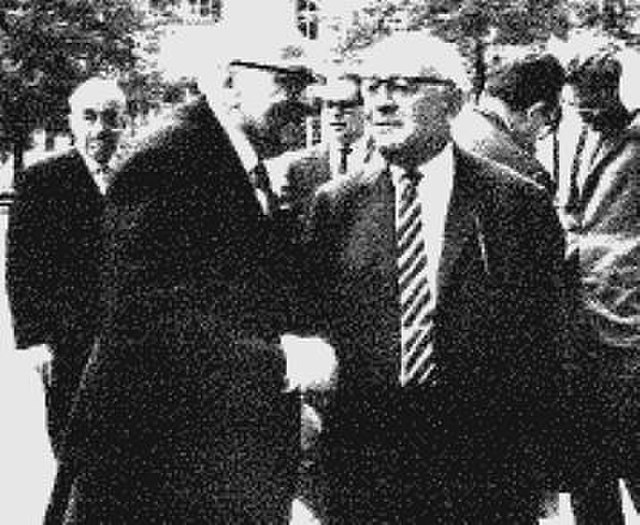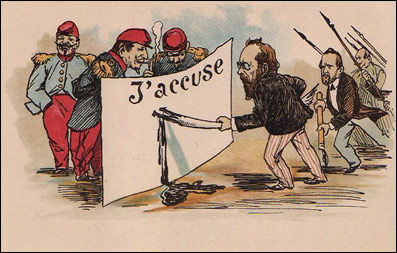Supposed critiques of antisemitism are increasingly weaponized in defense of war and racist, imperialist, and colonial projects, including the ongoing genocidal violence against Palestinians in Gaza. While this weaponization is happening in many places, German language public debates seem to take it to another level: here, antisemitism is and has been discussed for years as if it was not a form of racism: State-funded educational work separates antisemitism from racism and in the humanities and social sciences, antisemitism research is methodologically and institutionally isolated from other research on racism. While the broader political history and function of this exceptionalization have become more obvious and widely discussed, there are still open questions when it comes to its theoretical foundations.
In German language critical theory, the concept of antisemitism is often based on the works of the early Frankfurt School’s research in Germany and the US from the 1920s through the 1950s. One common reference point is the chapter on antisemitism in the Dialectic of Enlightenment (1944) by Theodor Adorno and Max Horkheimer. This text is an exemplary case of an approach to antisemitism that can actually be useful in current debates and research – but only if it is properly reconstructed and re-interpreted within an updated Marxist anti-racist theoretical framework.
Adorno/Horkheimer ground their approach in a theory of society that resists the essentialization and dehistoricization of antisemitism. However, the fact that they are often cited to support such a flawed understanding of antisemitism is not (only) because of misunderstandings, but also because of an important gap: Adorno/Horkheimer’s approach lacks a concept of racism beyond antisemitism. Although they mention other racist practices, they do not offer a similarly complex theory for them. This weakness has enabled the (flawed) interpretation that, today, allows for Adorno/Horkheimer to be cited in support of the exceptionalization of antisemitism – to the point that the critique of antisemitism is used against anti-racist movements. Opposing this interpretation, I argue that antisemitism is, in fact, a form of racism and needs to be understood in its function in racialized capitalist societies.
Looking at antisemitism through its social function means asking: What does it do? Who and what does it serve?
“Elements of Antisemitism” is a chapter in the Dialectic of Enlightenment, a book famous for its critique of instrumental reason in capitalist society. Written in the early 1940s, as Anson Rabinbach has shown, the chapter on antisemitism was developed rather late in the process, when the magnitude of the National Socialist extermination project became known. In this chapter, Adorno/Horkheimer try to explain antisemitism based on a Marxist critique of society and on a psychoanalytically grounded view of human socialization. They assume that antisemitism has a social function, implying that any approach to understanding it must consider economic as well as political, cultural and social-psychological factors.
For fascism, Adorno/Horkheimer argue, antisemitism helps to identify an imaginary political opponent and thus create mass mobilization. For liberalism, on the other hand, antisemitism helps deny liberal-capitalist society’s effects on the dispossessed majority of society by constructing a social group (‘the Jews’) that is falsely blamed for these effects. In both cases, antisemitism helps to maintain the status quo and redirect potential resistance into channels that are harmless for those in power. Like a pressure valve, antisemitism regulates pressure within class society. One reason antisemitism can take on this function – and the one I am focusing on here – is because it contains a hatred that results from the suffering caused by class relations.
For Adorno/Horkheimer, the “economic ground” of antisemitism is “the disguise of domination in production” in capitalism. Simply put, while feudal relations are directly oppressive and personal, in capitalism, social domination is mediated by capitalist production: Workers are not forced to work by a lord, but by the material necessity to feed and house themselves and their loved ones. The labor contract falsely identifies it as the workers’ free decision to enter into a relationship in which they only receive wages, while the surplus value they produce is appropriated by the owners of the means of production. This betrayal, happening under the guise of the labor contract, is then experienced as a problem of trade and markets, where workers realize that their wage does not enable them to live well. Markets thus appear to be responsible for the negative effects of the appropriation of surplus value in capitalist production.
The distortion effect of the labor contract is amplified by what we might call productivist ideology: that the production of goods tends to appear as somehow more honest and respectable than circulation (read: trade or working with money). Think about the mainstream image of the ‘self-made’ business owner versus images of parasitic merchants and bankers. The idea such images convey is that production creates value, while trade is merely extractive – and therefore parasitic and the root of suffering. A Marxist critique of capitalism, however, can help us understand that those who actually own the means of production appropriate the surplus-value produced by workers. According to Adorno/Horkheimer, they are as parasitic as those working in trade and finance.
Now, what does this have to do with Jews? In Europe, for a long time, Jews had very restricted access to land, professional guilds, or sedentary lifestyle, and were therefore pushed towards work in trade and monetary transactions. Because the injustice of the economic system was falsely attributed to the sphere of circulation and Jews moved within this sphere in a visible way, they were often blamed for the injustice of the economic system. As with many racialized naturalization effects, living conditions of a minority, although created by the dominant society, come to appear as characteristics of the minority.
While Adorno/Horkheimer use Marxist ideology critique to explain the economic ground of antisemitism in class society, they also deploy psychoanalytic concepts to describe those aspects that defy rationalist explanations. This thread in their analysis is based on empirical studies in social psychology and addresses aspects of fascism that do not make sense at first sight, e.g. why Germans during National Socialism wanted Jews to be expropriated, even though they did not materially profit from this expropriation. Offering a theory of human drives and of the processes through which we all become functioning members of capitalist societies, they shed light on what might lead to violent outbursts and false projections onto unprotected minorities – among others, Jews.
Interestingly, Adorno/Horkheimer point out that victims of such dynamics can also become perpetrators, and that not only diasporic Jewish minorities but all kinds of Others can become the object of projections and violent hatred. They also insist that what bourgeois subjects hate in minorities often hints towards repressed desires that cannot be fulfilled under capitalism, such as for “happiness without power, … wages without work, … a homeland without a boundary stone, … religion without myth.” Such resentment and hatred therefore serve the existing social order: If you hate those you think live differently, instead of the forces that deny you to live differently, you will not strive for overcoming the status quo. In this perspective, the only way to end antisemitism becomes clear: the struggle to abolish capitalist class rule alongside liberation for everyone.
Now, what can this approach help us understand – and what can’t it?
Adorno/Horkheimer’s approach helps us better understand National Socialist politics, ideology, and economy – also in relation to other imperialist and colonial projects in the 20th century. Puzzling aspects become clearer, such as the centrality of the extermination of the Jews and the fantasy of the Jewish world conspiracy in the Nazi elite’s war strategy: As historian Adam Tooze has argued, the “grand strategy of racial war” played an important role in NS domestic and foreign policy, to the point that it contributed to the Nazis losing the war.
Because Adorno/Horkheimer analyze antisemitism as a symptom of the social political conditions under which it emerges, it is obvious that specific antisemitic symbols or images they mention should not be decontextualized or viewed as transhistorical signifiers of antisemitism. Their approach enables us to examine antisemitism under changing historical and social conditions, without declaring every image of a Kraken or sharp critique of landlords as inherently antisemitic.
This perspective of analysis should also not be limited to antisemitism: approaching a social phenomenon via asking who and what it serves, economically, politically, and psychologically, instead of essentializing its context-specific features and symbols, is helpful for understanding processes of racialization, authoritarianism, and systemic and/or genocidal violence more broadly.
Applying this approach to other forms of racism, however, brings a weakness of Adorno/Horkheimer’s work into focus: Although they mention other forms of racism, they do not provide a concept of racialization or racism beyond antisemitism. In the chapter on antisemitism in the DoE, Adorno/Horkheimer mention anti-Blackness, but only as a backdrop from which to distinguish antisemitism. They also mention hatred of diasporic, migrant ways of life, but only insofar as this hatred concerns Jews. In both instances, the presupposed concept of racism remains implicit. This observation also holds if we consider other works, such as Guilt and Defense, and is further underlined by the fact that some of their works enforce racist stereotypes, such as Adorno’s writings on Jazz. (Of course, this has been pointed out before, e.g. by Alex Demirović 1992.)
Even though Adorno/Horkheimer themselves did not try to conceptually grasp processes of racialization beyond antisemitism, their approach can and should be contextualized within the growing body of theory on colonialism, racism, and processes of racialization in class societies. Because they look at antisemitism through its social function, their concept shares the theoretical and political thrust of approaches that understand racialization only in relation to its social conditions.
Contextualizing the critique of antisemitism within anti-racist theories
After the Second World War, biologistic theories of race were discredited, decolonial liberation movements changed political and economic landscapes, and migration from global majority countries to Europe increased. In this context, a culturalist racism – which refers to supposedly incompatible cultures instead of ‘biological’ ‘races’ – emerged. This shift, described by Frantz Fanon already in the 1950s, led anti-racist theorists to fundamental debates on the concept of racism. The challenge was to include different social formations in the analysis, even if the specific mechanisms of racialization – legal, economic, social – and the ideological justifications at play are different.
Responding to this challenge, approaches have included what Manuela Bojadžijev calls “Anti-Racism as Method”: the assumption that race and racism cannot be defined in absolute terms, but only in relation to their material and social conditions. Anti-racism, in this view, is a praxis that both describes and opposes racializing regimes, thereby revealing, as Paul Gilroy writes, that racialized categories “mark sites and boundaries of class struggle.”
In this perspective, racism is always the subject of social conflict and racialized social groups only exist as groups as long as the conditions make them such. It also implies that racism is an intrinsic part of class society, not external or marginal. Therefore, just as Adorno/Horkheimer suggest with regard to antisemitism, all racialized phenomena have to be analyzed in a way where economic, political, cultural and social-psychological factors are considered.
Within such an understanding of racialization, it only makes sense to include Jews and the concept of antisemitism and to refuse separating them from anti-racist theory and praxis. Looking at antisemitism through this framework can help us understand it in relation to other forms of racism, especially where the supposed ‘protection of Jews’ is instrumentalized against other minorities. It might even help us better understand other racist phenomena that contain elements of what used to be associated with modern antisemitism (e.g. the relative flexibility of physical and cultural markers of racialization, the fact that what is persecuted is constructed in the process of persecution, as well as pogroms as instances in which destructive and eliminatory violence is unleashed).
If we understand that all forms of racism have specific mechanisms and functions, depending on material and social context – therefore also different modes of operation, logics, symbols – then there is simply no reason to believe that antisemitism is so unique that it should be in a category of its own. So why would anyone insist on this uniqueness and why would they use Adorno/Horkheimer to make this claim?
Objection: What about the unique features of antisemitism?
The reason why Adorno/Horkheimer can lead us to believe that antisemitism is especially unique or not a form of racism at all is because they were working with a reductionist understanding of racism at best, from which they differentiate antisemitism. Although it was correct that they needed to expand the theoretical and methodological toolbox of Marxist theory to understand the persecution of Jews – this is true for any other form of racialized oppression or persecution. The complexity in Adorno/Horkheimer’s approach indicates how theoretically sharp and nuanced every approach to understanding racism and racialization within capitalist class society should be.
While this may seem obvious to many readers of The Left Berlin, it is still a contentious point to make in German academic critical theory and social sciences. Despite some scholars pushing for wider acceptance of anti-racist theoretical frameworks in critical theory and including antisemitism in these, one may still get surprised or worried reactions (and occasionally be followed to the S-Bahn by an upset philosopher insistent on discussing the singularity of the Holocaust). The exceptionalization of antisemitism in German theoretical debates, combined with the overall lack of understanding processes of racialization in class society, has not only produced conditions that make it seem original or provocative to argue that antisemitism is racism. It has also, and that is the more important issue here, contributed to the decontextualization of the critique of antisemitism to the point that it can comfortably be used against leftist and anti-racist struggles today.
To be clear, I am not only opposing attempts to separate antisemitism as unique from other racisms. I also oppose the position that it is unnecessary to look at the specifics of antisemitism. If we aim at abolishing all racism, it is absolutely helpful to look closely at when and why violence is aimed at erasure, and when and why it is structural violence or everyday police violence, intended to maintain the racist stratification of the working classes. My point is that it is precisely when you look at the specific ways in which different forms of racism function in relation to each other that you can come to a better understanding of the respective phenomena and, above all, of the society that produces them.
This is where I want to get back to the current situation in Germany. Here, anti-Muslim racism and structural violence against migrants and refugees coexist and interact with both actual antisemitism and moral panics about antisemitism. In the context of racist repression against Palestinian communities and criminalization of solidarity with the Palestinian struggle for liberation, we see an increasing use of antisemitism as a border mechanism and the instrumentalization of ‘Jewish safety‘ (as Danna Marshall and Ma’ayan Ashash argue). We see how differently racialized social groups are being constructed and instrumentalized with different functions. And, of course, we see resistance and organizing against these mechanisms. A theory of racism and racialization, and especially a theory of antisemitism, must be informed by these struggles and serve the project of building solidarity in class struggles.




